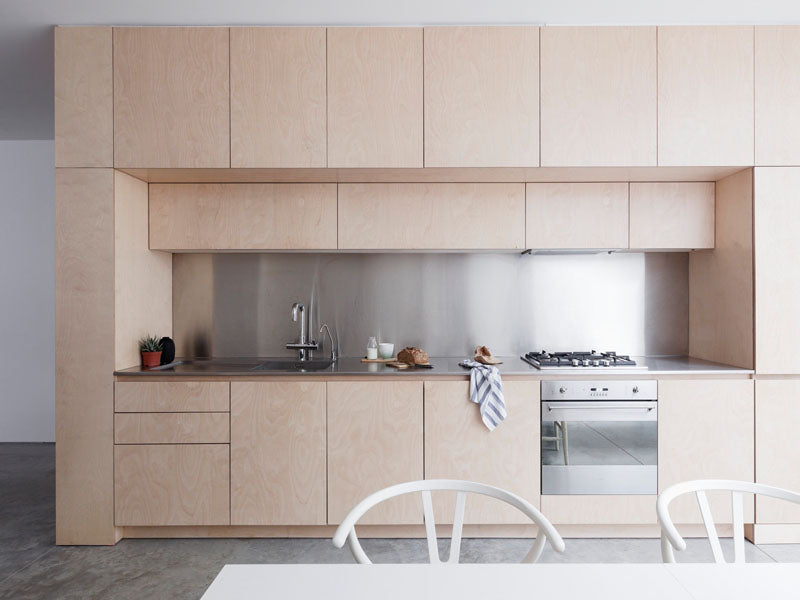How Does Ply Stack Up?
Which one where?
At So Watt we use birch ply for its gorgeous tone and structural stability. Our birch ply comes from either Finland or Russia depending on the harvest that year, making sure to never over harvest an area. The Birch tree is also fairly fast growing, so you could say that increased plywood use encourages the planting of more trees, another reason to love ply.

Image Credit: Larissa Johnston and Beatty Vermeiren (cover image)
Birch Ply is synonymous with Scandinavian Design, as it is a local material. The lighter timber look has since been part of a mass trend known as ‘Scandi’ where some manufacturers are using stains to try and replicate the tone.
Lately, Birch Ply is popular for joinery and architectural uses, such as the linings of interior walls of full height built in kitchen cabinetry.

Image Credit: Living Edge
Various Veneers
The iconic pieces of the 1940s often used Plywood to form organic timber furniture. One of the most famous examples is the Eames Lounge Chair Wood (LCW) which was made by taking the individual veneers and pressing them into a mould with the glue, rather than cutting the shape from a flat sheet.
Interestingly, the first iteration of this chair was available in Mahogany, Rosewood, Avodire, Canaletto, Aniline and Walnut timber veneers, as well as Birch. But it is still plywood at its core!

 Image Credit: Langke Plywood & ULMA Constructions
Image Credit: Langke Plywood & ULMA Constructions
Form Ply
Form ply is also a popular look for interiors and furniture, however what you see in the glossy magazines is not always real form ply, but normal ply (often birch) with a black melamine face.
Honest form ply often has a few shiny sections or strips along its face where the rollers ran over it during manufacture. It is not a high-quality finish because it’s intended use is for forming concrete (plywood formwork)! The slippery black film peels away from set concrete easily.


Leave a comment